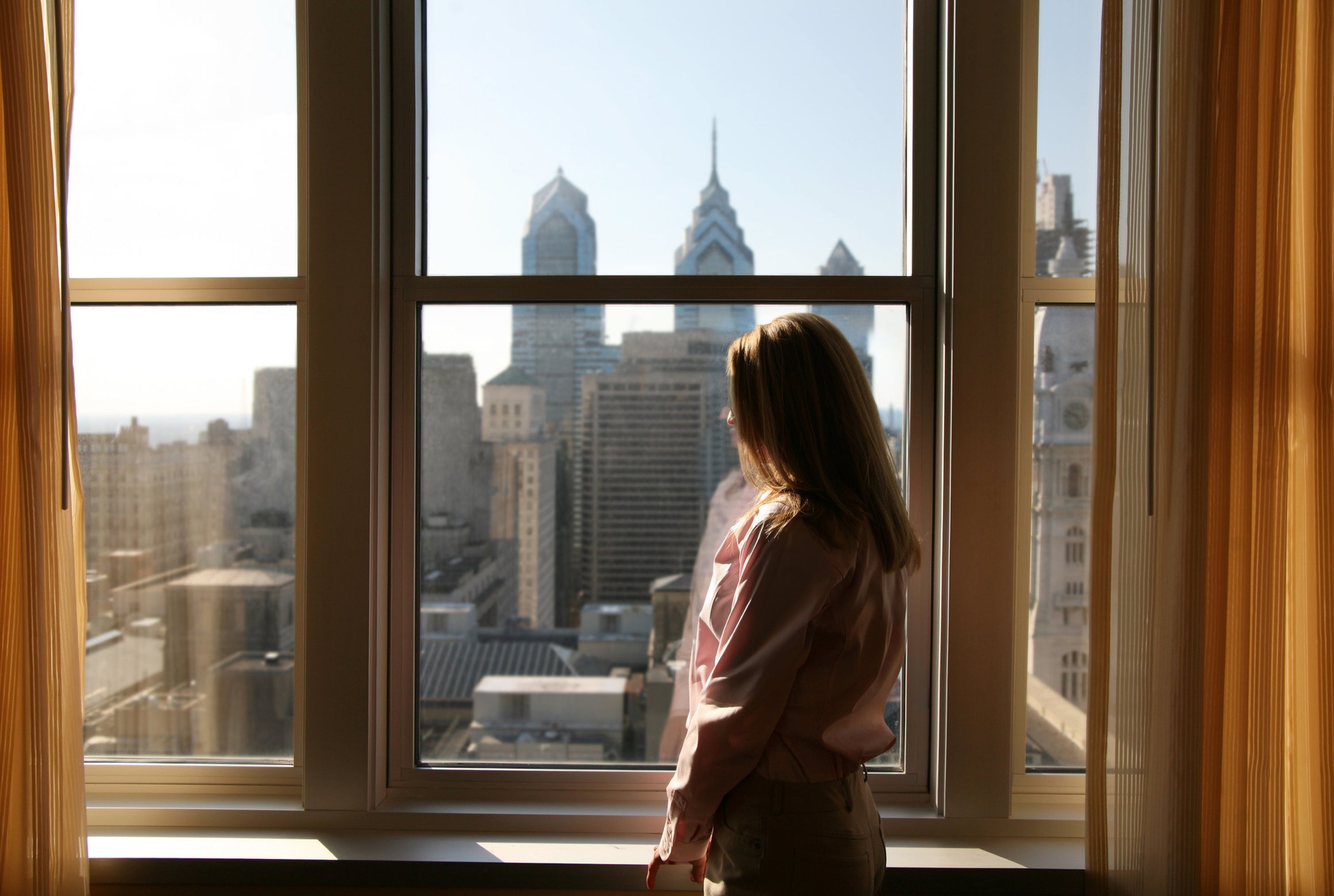Why Do I Need to Wear Sunscreen Inside?
“Unfortunately, you are not off the hook in wearing sunscreen even if you are indoors,” Dr. Zeichner explains. “UV light can penetrate right through window glass, which means that you are at risk for sun damage. The only time you get a bye is if you are in a room with no windows.”
In short, unless you’re quarantining in a cave, you need to apply a sufficient layer of sunscreen daily. While it is true that windows in your car, home, and office do block UVB light, damaging UVA rays slip right through, leaving you susceptible to skin cancer and photo-aging (i.e., wrinkles and hyperpigmentation). Here, the derm explains how you can still enjoy the view and safeguard your skin from the sun while WFH.
UVA ISN’T THE ONLY OFFENDER
“Anytime you are indoors, you also are at risk for blue light exposure,” explains Dr. Zeichner. “Our lightbulbs and electronic devices emit high energy visible light [HEV], which is light in the blue spectrum that is known to cause premature skin aging and dark spots.” Ditching all digital devices isn’t an option, especially during a time when they serve as lifelines to the outside world, but you can armor up. Save (UR PRETTY) Face is, according to the brand, an “IRL filter” made of four layers of scratch-resistant tempered glass that blocks blue light. Dr. Loretta’s Urban Antioxidant Sunscreen SPF 40 uses Indian ginseng extract to protect skin from HEV light and zinc oxide to defend against UVA and UVB rays.
LOOK BEYOND THE SPF LEVEL
Dr. Zeichner says he always recommends using sunscreen with at least an SPF of 30 but notes that the number splashed across the front of the bottle is only half the battle. “If you are using sunscreen exclusively indoors, the SPF level is not as important as the words ‘broad-spectrum’ which represents the sunscreen’s ability to block UVA light,” he explains. “I typically recommend sunscreens that contain zinc oxide for optimal UVA light protection. Many of the chemical blockers that are currently available do not fully block the long-wave UVA rays.” Two options worth trying: Salt & Stone SPF 30 Sunscreen Lotion (an organic mineral formula featuring non-nano zinc oxide) or Zelens’ Daily Defence Sunscreen SPF 30 (a broad-spectrum SPF that uses micro-encapsulation technology and synthetic ingredients).

YOU MIGHT NEED MORE THAN MAKEUP
There’s been much debate about whether or not makeup and moisturizers infused with SPF provide a sufficient level of protection, but Dr. Zeichner says the results are really dependent on the application. “So long as you put on enough of the product and cover all necessary areas, you will get the level of sun protection labeled on the bottle of moisturizer or even makeup with sunscreen,” he says. “The problem with makeup is that in order to achieve that level of sun protection, you would have to put on so much that it might leave you with a caked-on appearance. Plus, makeup is not typically applied in all areas that need protection.”
The Skin Cancer Foundation recommends using a “nickel-size dollop” of sunscreen for your face alone. The rules for reapplying every two hours also remain the same whether you’re using a standard sunscreen or makeup spiked with SPF. Ilia’s new Super Serum Skin Tint SPF 40 seamlessly combines zinc oxide, hyaluronic acid, plant-based squalane, and niacinamide into one tinted formula that feels featherweight—just don’t forget your ears, neck, etc. Top up throughout the day without wrecking your makeup using a powdered sunscreen or spritz like Colorscience Sunforgettable Total Protection Brush-On Shield SPF 50 or Supergoop Defense Refresh (Re)setting Mist SPF 40.
WARD OFF WEIRD TAN LINES
In addition to slowing the spread of COVID-19, a cloth face covering also offers some defense against harmful rays. “Face masks will provide a physical shield between your skin and the sun, as well as protect the lower face from UV light,” says Dr. Zeichner. Wearing a mask, however, is not a valid excuse for skipping SPF—which should be applied to your entire face and any other exposed areas. “I expect to see COVID tan lines this summer where the lower face will have a pale area in the distribution of the mask and the rest of the face gets tan because it is not being properly sun protected,” he adds. Consider yourself warned.
Written by Amber Kallor
More Subject:Matter
One part analyst and one part aficionado, BeautyMatter founder Kelly Kovack was once a self-proclaimed tomboy who “fell into beauty by accident.” Growing up, she never saved her allowance to buy lip gloss or spent hours in front of the mirror perfecting her look. In fact, makeup was forbidden entirely at her Catholic school in Florida.
Read more
